Introduction
Have you ever had contemptible, rude customer service? I know I have.
In November, I took a JetBlue flight from Las Vegas to Los Angeles. The ticket agent at McCarran airport made some comments that are not polite enough to repeat on this blog.
What did I do?
Instead of getting annoyed, I took to Twitter. Less than 10 minutes after I tweeted about the incident, JetBlue responded back asking for information about the incident.
A complaint was filed, and I had the chance to vent my anger at a personal attack on my identity with my social network.
@Nansida We’re sorry to hear that, David. Is there something specific you’d like to share so we can pass it along?
— JetBlue Airways (@JetBlue) November 22, 2014
@Nansida Please accept our deepest apologies David and know we’re taking this complaint very seriously. We need you to email your… 1/2
— JetBlue Airways (@JetBlue) November 23, 2014
@Nansida …confirmation number, flight number, and any other details to our Customer Commitment team @ https://t.co/PDZRSr3JSQ 2/2
— JetBlue Airways (@JetBlue) November 23, 2014
@Nansida Thanks David. Our Customer Commitment team will respond via email within 48 hours.
— JetBlue Airways (@JetBlue) November 23, 2014
On average, I fly between Los Angeles and Las Vegas roughly 15 times per year. With an average round trip cost of $200. Let’s assume that JetBlue has a profit margin of 30%. They’re losing $900/year in profits from my business only if they handled this incident poorly.
$900 annual profit may not sound like much for a company such as JetBlue, but let’s take a look at the bigger picture.
For ease of calculation, let’s say on average Jetblue makes $500 per customer per year and it has 1,000 customer complaints per month on social media, then JetBlue is retaining $500,000/month in annual profits just by providing effective customer complaint response (which is a lot cheaper than acquiring a new customer).
That is why using Twitter can be such a useful tool to manage your customer service show that you actually care about the address you’re customer’s issue.
To help your ecommerce store do the same, we have provided a list of specific actions that your company should do to improve their customer retention through Twitter.
Here are a few ways to help your customers through Twitter
1. Check out your mentions on Twitter – First, you need to know what customers and prospects are saying about your product and services. The big question that most companies have then is how to track mentions of your business on Twitter. Fortunately, there are a number of tools to help you do this more effectively.
Specifically, Hootsuite and Netvibes have great dashboards companies can use to track social media streams for different keywords. For example, Shopify Nation would want to have streams set up not only for the @ShopifyNation tag but also for Shopify Nation and ShopifyNation.Com.
People do not know your brand as well as you do, so if you have a weird spelling or name, make it easy for them to reach you on Twitter.



Additionally, you should be doing searches on Twitter periodically to see what new hashtags and mentions are being used in your brand and for your industry. With over 500 million tweets going out daily it is easy to miss. Therefore, you will want to test out different keyword combinations as you see below.
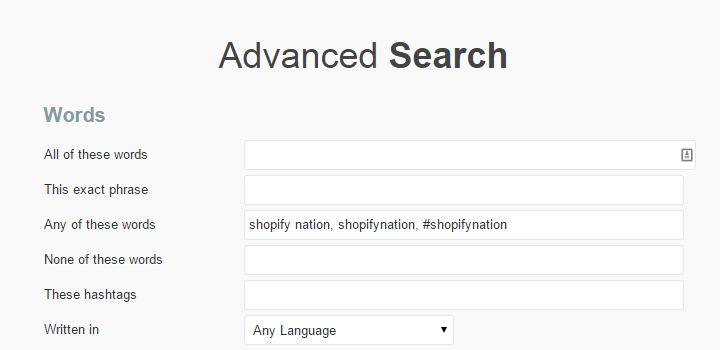


Fortunately, brands using Twitter can take specific measures to ensure they answer all of their customers’ requests. Take The Ghostly Store. Their Shopify ecommerce store sells products for music lovers.
However, like most ecommerce stores keeping products in stock is sometimes a challenge. This is especially true when you are working with third-party vendors for some of your products.
That is why when customers were asking about the Behance Action Journal went out of stock, they turned to Twitter to get answers.
That is why the Ghostly Store monitors their brand and provided a detailed response to customers.
How do you respond to customers inquiries on Twitter?
Do you have a plan set up like The Ghostly Store? If not, why?
2. Respond back to all inquiries – Over 70% of brands ignore complaints on Twitter…this is deplorable! If phone support customers do not just suddenly go away, why would they do so on social media?
Take a recent series of tweets by @SteveWhite71, and his tirade against @PivotalLiving. He tried for over two days to get a response…that stinks! Finally, after two days he contacts the CEO and the company for a response out of desperation.
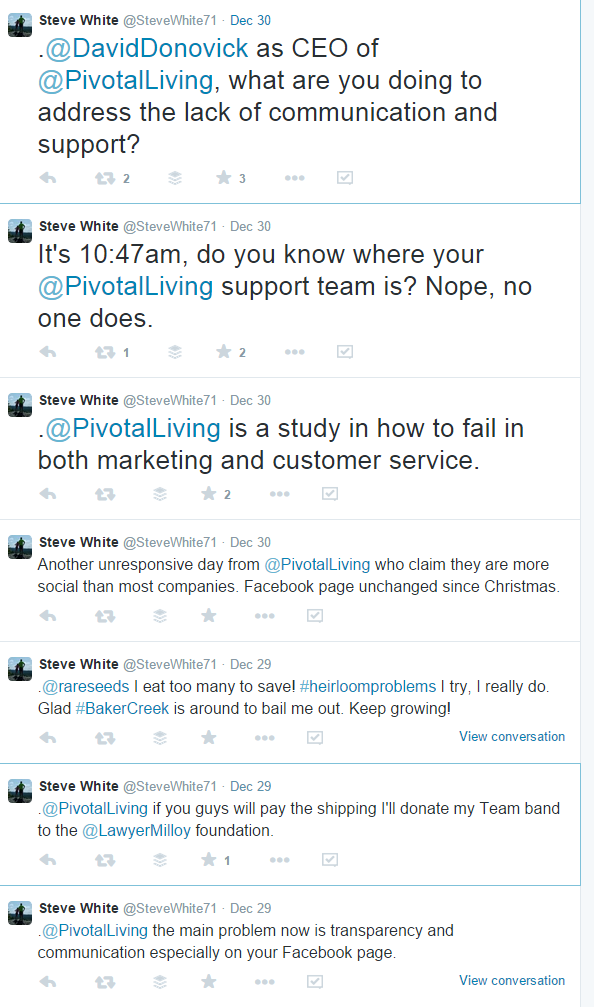


It was the last tweet in the string from him, so it probably worked. Yet, this is to be avoided. Make sure that you respond back to all inquire Answer your tweets from customers at a minimum…this is like bare minimum hey we don’t care type attitude…within 24 hours…and sooner preferably. We talk about this more in the next point, but it definitely is worth repeating.
Here are a few things your company should keep in mind when using Twitter.
First, when working with sensitive client information, take the conversation to direct messaging (DM) in order to protect your customers.
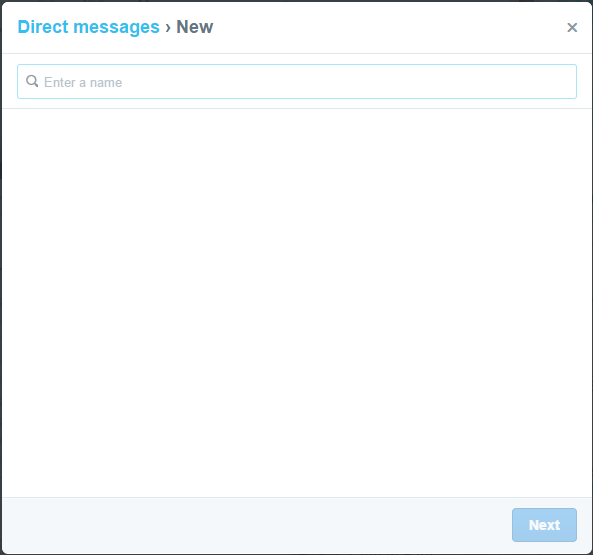


Second, it is not all about the Tweets…about the Tweets…about the Tweets…no trouble…and pop culture reference forever ruined!
Direct customers to proper channel for additional help. Shockingly, 140 characters do not resolve all complaints.
Take ecommerce site Skinny TeaTox. They respond quickly to clients questions, and for those, they cannot answer directly on Twitter provide the appropriate email address to address clients concerns.
Are you answering all of your client’s questions on Twitter? If not, what is the biggest obstacle in your way?
3. Be honest – Stuff happens! Do not make excuses, just apologize and let the client know how you will fix it. Take Luxury clothing company C.X.X.V.I. When they recently had a problem with shipping through UPS, they worked with customers directly on Twitter to resolve the issue.
They did not make excuses but figured out a solution to help the client receive the goods.
<script async src=”//platform.twitter.com/widgets.js” charset=”utf-8″/]
Being honest is something we all heard in school when we read about Honest Abe. However, as adults, we sometimes forget how important it is when dealing with others. Most customers will not be mad at you when you tell them the truth…and if they then you are probably better off not having them as customers for too long.
Look into your recent responses on Twitter. Were they honest? Enough said!
4. Respond back quickly – According to recent reports, 42% expect a response within 60 minutes on social media.
SugarFina runs a Shopify store and relies upon Twitter to connect with their international market. The trendy paper store gets a lot of requests from customers about their products, and also questions about purchases.
Look at this string of questions from a client. While they do drop the ball by not responding right away the second time…Heck! We all probably partied a little too much over New Years… oh, wait! That’s not a valid excuse!
The point is that most of their responses are the same day, and most shortly after the initial inquiry. When the conversation got too personal they took the conversation off Twitter, but before they did were able to answer a lot of their customers shipping questions.



Whenever I think of responding quickly on Twitter, my mind goes to the Jimmy John sub commercials. to paraphrase, I want Twitter Customer Service so fast that I will freak!
Using mobile notification tools, your customer service team can respond quickly to any questions that you have before the client has a chance to get mad or worked up over their challenge.
Are you a solo entrepreneur? Then take a play out of Gary Vaynerchuk’s playbook. Whenever he has a minute or two between meetings, he answers questions on Twitter.
Most people get short replies directing them to people on his staff, but he replies so fast that people are in awe. If you can do that, then you will get the reputation for excellence that you want for your business.
You do not need to resolve all questions immediately, as long as you address them and what you are going to do to solve them.
Anything less is just ordinary. How extraordinary are you in your response times on Twitter? What tools or ideas can you use to make it better?
5. Have separate handles for different services – For larger companies, you might want to break down your twitter account, so companies know where to go to ask customer support questions.
@ComcastCares and @NikeSupport are two solid examples of this.
While all social media accounts will have to do some customer service, it is best to direct customers to go to a more knowledgeable source. This way with separate customer service accounts, a brand can closely monitor how to solve their customers’ issues faster.



How many accounts on Twitter do you have?
Do you have one account specifically for support? You don’t? Hmm!
6. Provide useful answers – Flo messed up! Well, at least her social media team did. In a court case over the wrongful death of Katie Fisher, Progressive apologized to her brother who recently posted My Sister Paid Progressive Insurance to Defend Her Killer in Court on Tumblr.
What’s wrong with apologizing? It is not the apology, but the use of auto-posting technology used to post the apology 12 times to different people involved in the case.
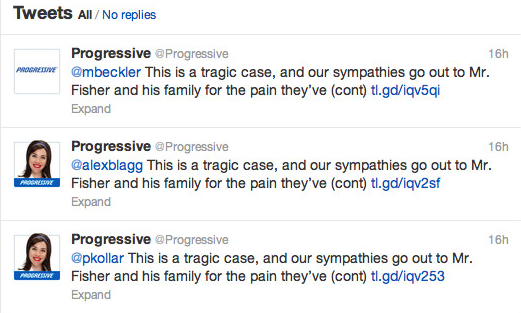


Instead of providing a useful, soothing response to help the family heal, they posted a generic message that flamed the fans and got media and the public cursing out Progressive TV personality Flo.
What should a company do then?
I am glad you asked Alex! E-Retailer Asos helps their customers not only with tracking their shipping and packages, but also returns. Their customer service Twitter account (@ASOS-HeretoHelp) even pinned the specific information they need to help customers with their challenges on Twitter.
When customers do contact them, they can provide them with detailed information either through Direct messages or mentions on Twitter. This tweet below is a perfect example.
Not all of the customers might like the answer, but they know with Asos they will get a speedy response.
Is your Twitter customer care run by computers or humans? Has the computer revolution taken over at last? Fight it! Fight the oppressive machines, and have real people answering real questions on Twitter.
#7 track your competitors as well – Are your competitors dropping the ball? Then this might be a golden opportunity to pick up business.
First, Create a twitter list of competitors that you believe could be dropping the ball. Use the advanced Twitter search we showed above. Depending upon your industry you might want to check the Annual Customer Satisfaction Survey to see who is dropping the ball.
Ironically, Twitter has one of the lowest customer satisfaction scores on the annual survey…not sure I am laughing or crying inside.
Once you have checked out the accounts, see what your competitors are doing about specific comments on their brand. A good @mention and brand search will help. Use words like sucks or frustrated at the end of the brand name.
We did this with Amazon, and you will be shocked by the number of comments to wade through potential customers.
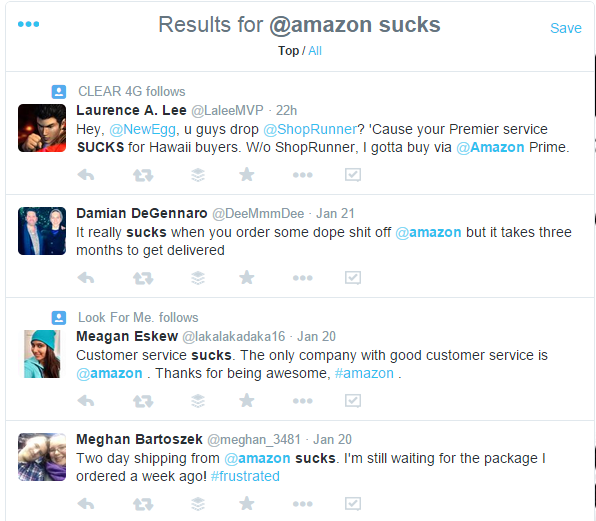


Second, take advantage of the situation when it arises. While not a competitor, Oreo Cookies made one of the biggest splashes in 2013 with their Twitter post about Dunking in the Dark when the Super Bowl lost lights in half the stadium during halftime.
Their response, while everyone else was complaining, was to encourage people to use the time to dip Oreo cookies in the milk in the dark.
Because their team was on call, due to an ad they had for the game they were able to come up with content on the spot.
Similarly, take brewer DogFish Beer. When a Red Cross employee accidentally posted on Red Cross’s account instead of her own that she wanted to #getslizzerd with 4 DogFish Beers, the beer maker took advantage of the situation to raise money for the Red Cross when users purchased their beer.
We say this in the nicest way possible. How are you taking advantage of your competitors?
Okay! It did not sound nice, but it is up to you to provide the standard of excellence in your industry. When your competitors drop the ball, you should not let it stay down. Pick it up, and return it for a touchdown.
Final thoughts…
Getting a handle on Twitter customer service can be a challenge. From responding back to the flood of questions customers have to ensure that your responses are professional and helpful can try you at times.
However, your ability to deftly help customers via this platform can be a tremendous boost to your business brand and bottom line. You will make mistakes, and that is okay! The key is to be upfront and honest with customers, so they know you are working to correct them.
If you have additional questions about how to use Twitter for your customer service, let me know in the comment area below.

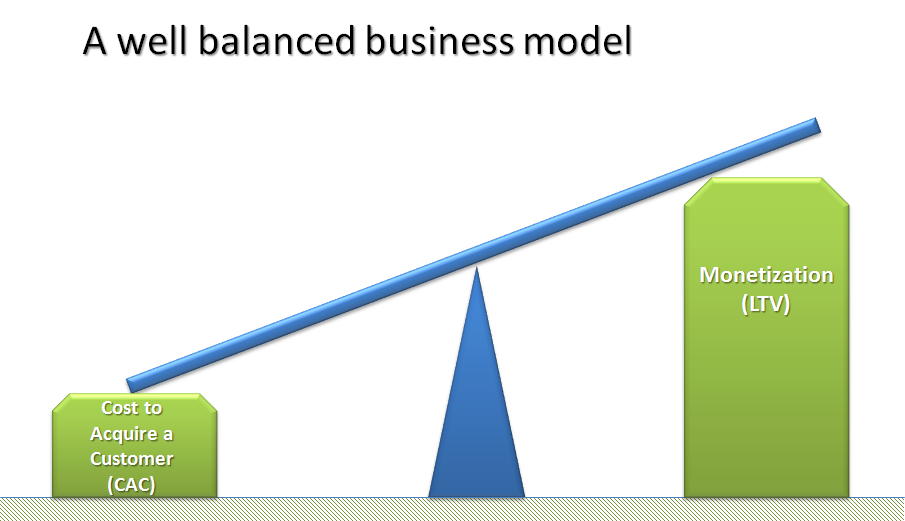
Comments